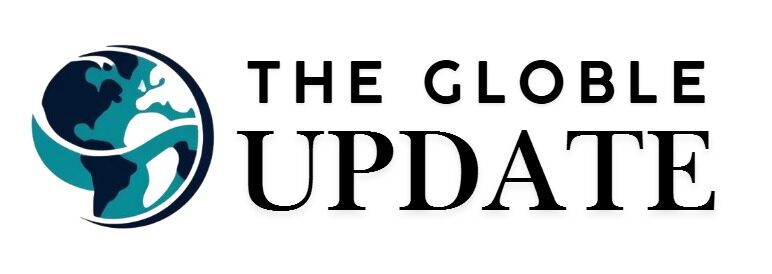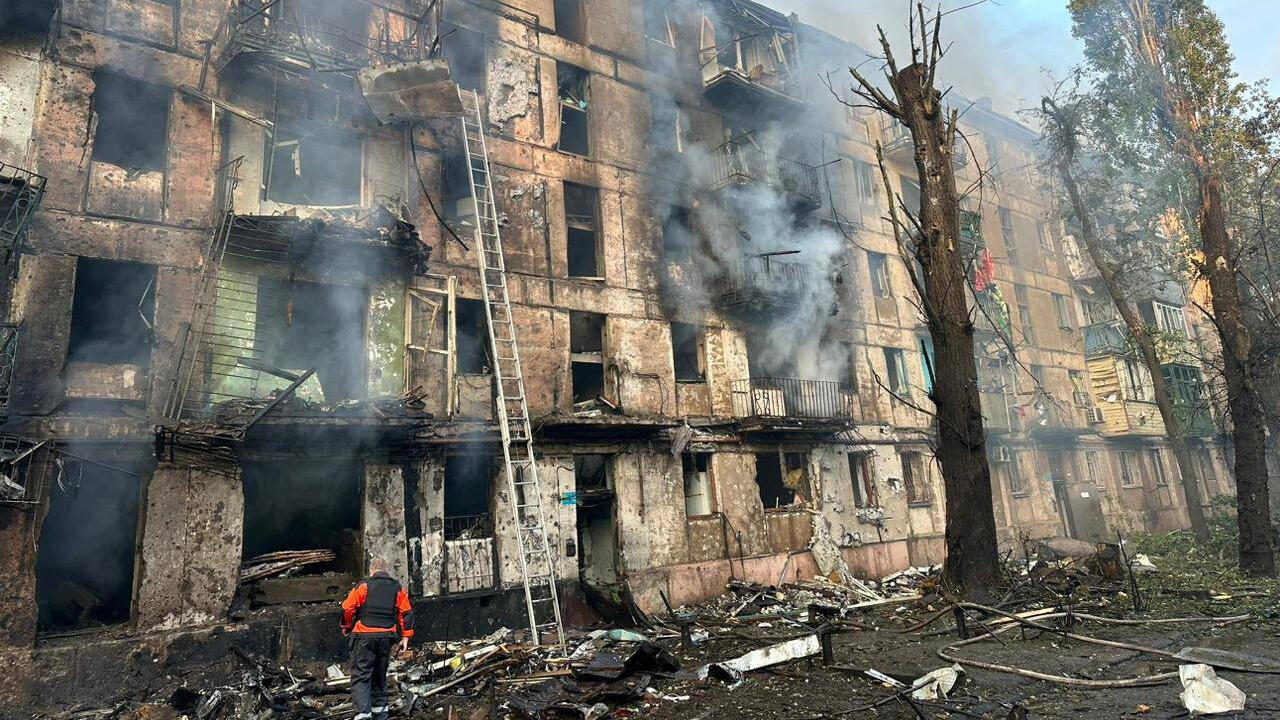A Historic Moment in Beijing
For the first time in history, Xi Jinping, Vladimir Putin, and Kim Jong Un appeared in public together, presenting a strong image of solidarity at China’s massive military parade in Beijing. The event, held to mark the 80th anniversary of the end of World War Two, was as much about history as it was about the future of global power politics.
President Xi framed the occasion as a choice between “peace and war,” with China showcasing nuclear-capable missiles, drones, robotic weapons, and other military advancements. His message underscored China’s ambitions to position itself as a counterweight to Western dominance.
Parade of Power and Precision
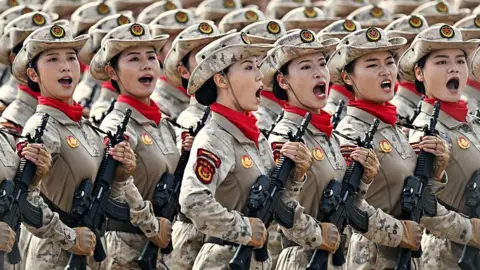
Photo Credit :- BBC
The Beijing parade was a carefully choreographed display of patriotism, military modernization, and precision. Thousands of soldiers marched through Tiananmen Square as an estimated 50,000 vetted spectators watched.
Among the showcased weapons were:
- Nuclear missiles with intercontinental range
- Underwater nuclear drones
- Stealth “loyal wingman” drones supporting fighter jets
- Laser weaponry and robotic “wolves”
The parade ended with thousands of doves and balloons filling the skies, symbolizing peace, even as weapons of war dominated the day.
Xi, Putin, and Kim: A Symbolic Alliance
The most enduring image came before the first cannon fired: Xi greeting Kim with a firm handshake, then moving to greet Putin, before all three leaders walked together to view the parade.
This symbolic moment projected unity between three nations often positioned in opposition to the West. While most Western leaders skipped the parade, representatives from Iran, Pakistan, Vietnam, and Zimbabwe joined, along with Serbia’s and Slovakia’s leaders, who even posed with Putin for photos.
Bilateral Meetings: Putin and Kim Strengthen Ties
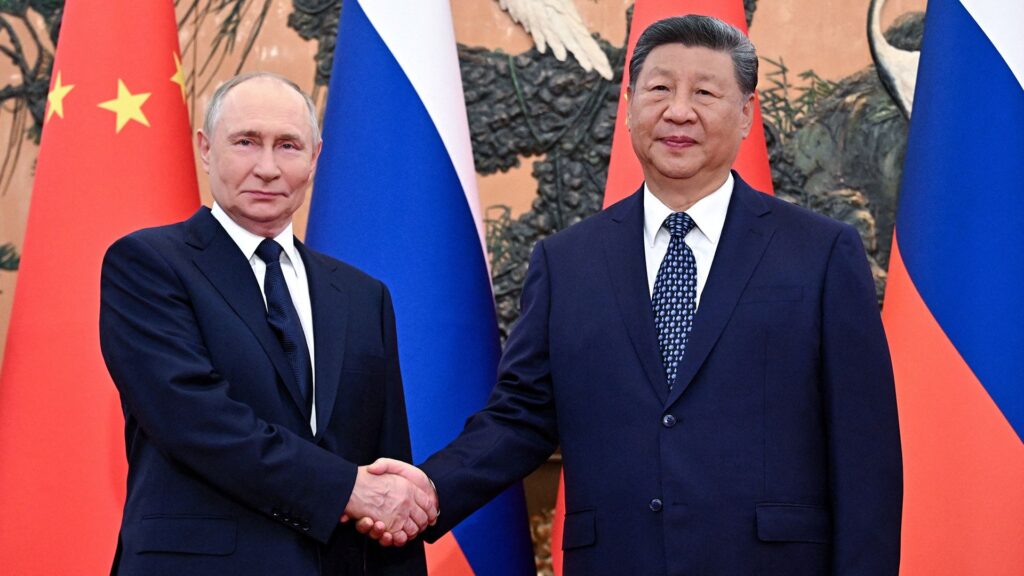
Photo Credit :- BBC
Beyond the public spectacle, Putin and Kim held a two-and-a-half-hour bilateral meeting at Beijing’s Diaoyutai State Guesthouse. Discussions focused on North Korea’s contributions to the Ukraine war, including the deployment of up to 15,000 troops and shipments of ammunition to Russia.
In return, Pyongyang is believed to be receiving financial support and weapons technology assistance from Moscow. The meeting ended with a warm embrace between the two leaders, signaling deepening cooperation.
Global Reactions: West Watches Closely
Notably absent from the parade were leaders from the US, India, and South Korea, all of whom declined invitations. Instead, Western powers monitored the display with concern, particularly the United States.
Former US President Donald Trump took to social media, accusing Xi, Putin, and Kim of “conspiring against the United States.” The Kremlin quickly dismissed his remarks as “ironic,” stating that the three leaders were not plotting but simply recognizing Washington’s influence in global affairs.
Comparing Attendance: East vs. West
Here’s a look at who attended the parade versus who stayed away:
| Attending Leaders | Absent Leaders |
|---|---|
| Vladimir Putin (Russia) | Joe Biden (USA) |
| Kim Jong Un (North Korea) | Narendra Modi (India) |
| Masoud Pezeshkian (Iran) | Lee Jae Myung (South Korea) |
| Shehbaz Sharif (Pakistan) | Most Western European leaders |
| Aleksandar Vucic (Serbia), Robert Fico (Slovakia) | Australia, Canada, Japan |
The contrast highlighted how China is consolidating alliances with non-Western partners while facing increasing distance from Western powers.
Xi’s Message: Peace, But on China’s Terms
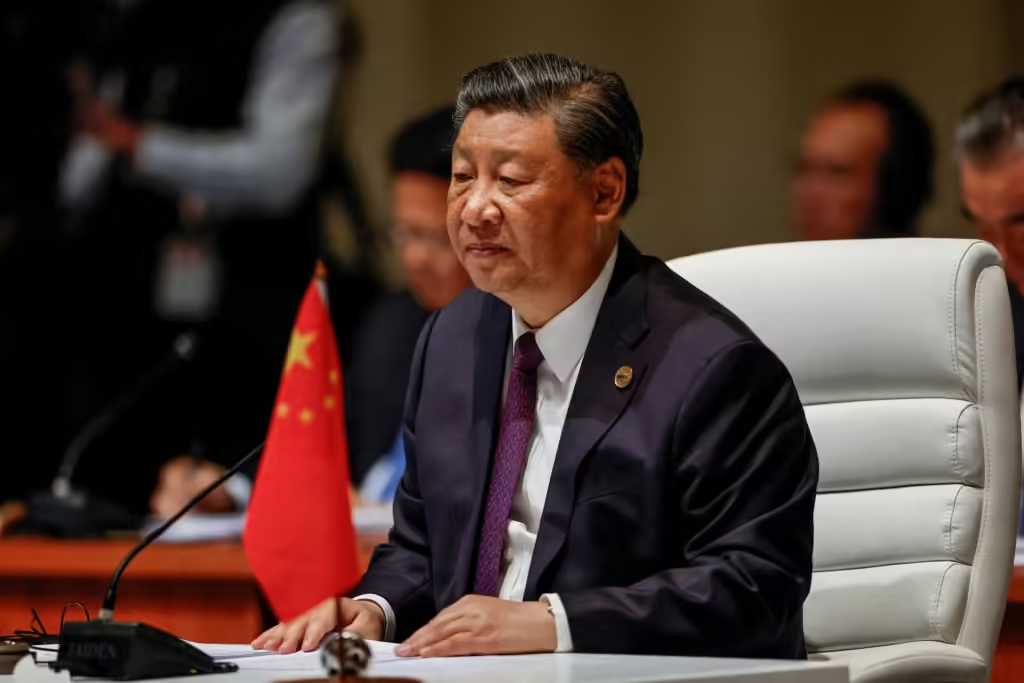
Photo Credit :- reuters
In his speech, Xi called for nations to “value peace” and avoid returning to the “law of the jungle.” He stopped short of naming specific countries but echoed Chinese officials’ frequent criticisms of the United States as a “bully” in global trade and security.
Raising a toast, Xi declared his hope for “common prosperity for all humankind.” Yet the presence of Putin and Kim—leaders of nations under heavy Western sanctions—made it clear that Beijing’s vision of peace is tied closely to forging alternative global alliances.
The Bigger Picture
The China military parade was more than just a display of weapons; it was a message to the world. By standing shoulder to shoulder with Russia and North Korea, Xi Jinping positioned China at the center of a new axis of power.
As global tensions rise, this united front signals a geopolitical shift that could reshape international relations for years to come.
